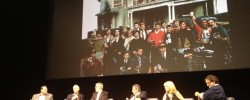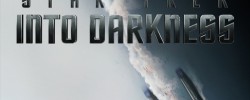
Review: Broken (2012)

Cast: Tim Roth, Cillian Murphy, Eloise Laurence
Director: Rufus Norris
Country: UK
Genre: Drama
Official Trailer: Here
Editor’s Note: Broken is now open in limited release
The inherent unlikeness of so large an amount of drama occurring in so restricted a space is crucial to the idiosyncratic charm of the soap opera. “What are the odds!” is all we can cry as the characters of any such show deal with the year’s latest murder or attend a friend’s fourteenth wedding; soaps, for all their intended roots in ordinary drama, necessarily accentuate the frequency and intensity of such drama to amusingly extraordinary levels. Broken, the debut feature of director Rufus Norris, plays like a determined counterbalance to such excesses, the quiet dissolution of its multi-class English neighbourhood in the wake of scandals and accusations a more intently realistic examination of the way in which communities disintegrate.
That’s the movie’s primary concern, how our momentary (mis)judgements shape life for us and those around, how the decisions we make—particularly those clouded by passion, whether that of anger or of love—in the heat of the moment affect the world in the most untoward ways.
 Norris draws expressly on the great British realists in exploring this corner of the world, meticulously crafting the intricate relationships that tie together the three homes between which the drama occurs. Favouring an occasionally non-linear storytelling approach, he opens on an act of alarming violence before doubling back to explore the inducing motivations. It’s a sequence structure repeatedly employed in the course of the film, offering a moment divorced of context—as though glimpsed through a neighbouring window—before exposing the lead-ins and fallouts of these actions. That’s the movie’s primary concern, how our momentary (mis)judgements shape life for us and those around, how the decisions we make—particularly those clouded by passion, whether that of anger or of love—in the heat of the moment affect the world in the most untoward ways.
Norris draws expressly on the great British realists in exploring this corner of the world, meticulously crafting the intricate relationships that tie together the three homes between which the drama occurs. Favouring an occasionally non-linear storytelling approach, he opens on an act of alarming violence before doubling back to explore the inducing motivations. It’s a sequence structure repeatedly employed in the course of the film, offering a moment divorced of context—as though glimpsed through a neighbouring window—before exposing the lead-ins and fallouts of these actions. That’s the movie’s primary concern, how our momentary (mis)judgements shape life for us and those around, how the decisions we make—particularly those clouded by passion, whether that of anger or of love—in the heat of the moment affect the world in the most untoward ways.
A striking visual metaphor pervades the film, the landscape the characters occupy—primarily restricted to their isolated little circle—now and then expanded to incorporate a neighbouring scrap yard where cars are hoisted in the air and crushed. So is it with the lives of the people who stand, cast in the foreground, before this destruction; each of Broken’s characters is similarly thrust in the air and brought crashing back down in the course of the drama, their lives upended by deceit and distrust. Particularly for a first feature, Norris’ is a visually striking film, his penchant for bathing his handheld frames in soft lighting—the sun basking the characters in its glow as it rises or fades—making his an expressive realism. So engrossing is his aesthetic, in fact, that it almost manages to mask the script’s manifold flaws.
Precise performances from Tim Roth, Cillian Murphy, and Rory Kinnear—all arguably overshadowed by the child cast, led by astonishing first-timer Eloise Laurence—do much to abate the sense of simplicity that accompanies the characters, but the deeper the drama delves, the shallower they come to seem.
 Like loose threads slowly undoing a beautiful garment, the issues of Broken’s screenplay do it more and more damage the longer they go unattended. Precise performances from Tim Roth, Cillian Murphy, and Rory Kinnear—all arguably overshadowed by the child cast, led by astonishing first-timer Eloise Laurence—do much to abate the sense of simplicity that accompanies the characters, but the deeper the drama delves, the shallower they come to seem. Kinnear’s is particularly conspicuous, his quick-to-anger single father and the demon children he presides over essentially devoid of definition, even dangerously close to class caricatures. But maybe it’s most egregious in the case of the character played—harrowingly, it should be said—by Robert Emms; he and his arc are the most affecting weapons in the film’s arsenal, yet both are rendered all-but useless in the script’s hapless handling.
Like loose threads slowly undoing a beautiful garment, the issues of Broken’s screenplay do it more and more damage the longer they go unattended. Precise performances from Tim Roth, Cillian Murphy, and Rory Kinnear—all arguably overshadowed by the child cast, led by astonishing first-timer Eloise Laurence—do much to abate the sense of simplicity that accompanies the characters, but the deeper the drama delves, the shallower they come to seem. Kinnear’s is particularly conspicuous, his quick-to-anger single father and the demon children he presides over essentially devoid of definition, even dangerously close to class caricatures. But maybe it’s most egregious in the case of the character played—harrowingly, it should be said—by Robert Emms; he and his arc are the most affecting weapons in the film’s arsenal, yet both are rendered all-but useless in the script’s hapless handling.
The extended visual metaphor on which the film closes, especially when compared to the success of its recurring earlier counterpart, highlights precisely the problem with Broken. No amount of aesthetically intricate direction or casting success can bring nuance to characters who are but hollow shells. The best that can be hoped is that their vagueness be distracted from for as long as possible. It’s truly impressive just how long that is: Norris may not have here the material from which a great movie can be carved, but he has certainly done his utmost, and the fact that he—together with his well-managed cast, who each give it their all—actually manages some degree of genuine emotion with what are often little more than cardboard cut-outs is indicative of much better things to come.
Related Posts
![]()
Ronan Doyle
![]()
Latest posts by Ronan Doyle (see all)































